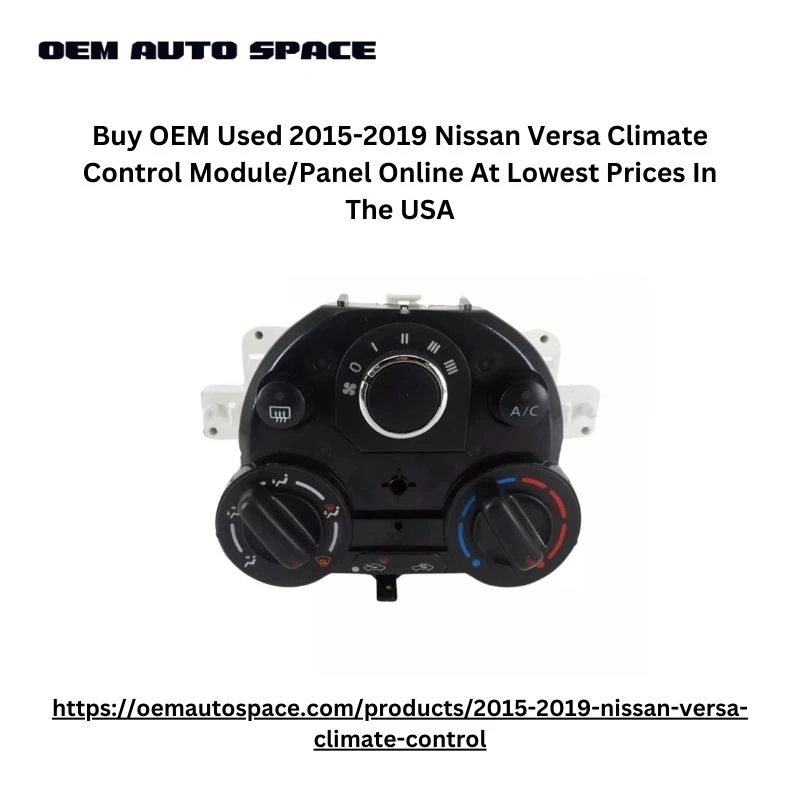When it comes to maintaining your vehicle’s performance, safety, and longevity, choosing the right replacement parts is crucial. Many car owners prefer OEM used auto parts over aftermarket alternatives because they ensure compatibility and quality. However, identifying genuine OEM parts can be challenging, especially in a market flooded with counterfeit and substandard components. In this comprehensive guide, we will walk you through the steps to ensure you are purchasing authentic OEM used auto parts for your vehicle.
What Are OEM Parts?
OEM (Original Equipment Manufacturer) parts are components produced by the same manufacturer that built your vehicle. These parts are designed specifically for your car’s make and model, ensuring a perfect fit and optimal performance. Unlike aftermarket parts, which are produced by third-party companies, OEM used auto parts maintain the original standards set by the automaker.
Why Choose OEM Used Auto Parts?
Purchasing OEM used auto parts offers several advantages, including:
- Guaranteed Fit and Compatibility: Since OEM parts are made for specific models, they fit perfectly and function as intended.
- High-Quality Standards: OEM parts undergo strict testing and quality control, ensuring durability and reliability.
- Cost Savings: Buying used OEM parts allows you to maintain your vehicle with original components at a fraction of the cost of new parts.
- Warranty and Reliability: Many used auto parts suppliers offer warranties, giving you peace of mind when purchasing.
How to Identify Authentic OEM Used Auto Parts
To avoid purchasing counterfeit or low-quality parts, follow these steps to identify genuine OEM used auto parts:
1. Check for OEM Part Numbers
Every OEM part comes with a unique part number assigned by the manufacturer. To verify authenticity:
- Locate the part number on your existing component.
- Compare it with the part number listed by the seller.
- Cross-check with the manufacturer’s database or official website.
If the part number does not match or is missing, it could indicate that the part is aftermarket or counterfeit.
2. Examine Branding and Logos
Authentic OEM parts usually feature the automaker’s logo or the original manufacturer’s branding. Look for:
- Embossed or engraved logos.
- Consistent font and design.
- Manufacturer’s name or code.
Fake parts may have blurred logos, incorrect fonts, or misspellings.
3. Inspect the Build Quality
OEM parts are manufactured to meet high-quality standards. Signs of authentic OEM used auto parts include:
- Precise and clean finishes.
- Durable materials without flimsy or brittle textures.
- Exact match in color and texture compared to your existing part.
Cheap replicas often have rough edges, mismatched colors, or poor-quality materials.
4. Compare with Your Old Part
One of the best ways to verify authenticity is by comparing the used part with the original one in your vehicle. Check for:
- Identical size, shape, and mounting points.
- Matching connector types and bolt patterns.
- The same weight and material composition.
If the replacement part differs significantly, it may not be a genuine OEM part.
5. Buy from Reputable Sellers
Where you purchase your OEM used auto parts plays a significant role in ensuring authenticity. To avoid counterfeit parts:
- Buy from established auto parts retailers like OEM Auto Space.
- Check online reviews and customer feedback.
- Ask the seller for certification or proof of authenticity.
Avoid sellers with vague product descriptions, no return policy, or questionable business practices.
6. Verify Serial Numbers and Markings
Some OEM parts feature serial numbers, barcodes, or QR codes that can be scanned to verify authenticity. Steps to check these:
- Look for an official manufacturer’s label.
- Use a barcode scanner app to verify product details.
- Cross-check with the manufacturer’s records if possible.
Fake parts often lack these identifying features or have incorrect serial numbers.
7. Be Wary of Extremely Low Prices
While used auto parts are generally more affordable than new ones, excessively low prices can be a red flag. If a deal seems too good to be true, it might be:
- A counterfeit part.
- A defective or refurbished component misrepresented as OEM.
- A non-OEM aftermarket alternative.
Always compare prices from multiple sources to get a realistic estimate of the part’s value.
Final Thoughts
Investing in OEM used auto parts is the best way to maintain your vehicle’s integrity, safety, and performance. By following these steps—checking part numbers, inspecting branding, verifying build quality, and purchasing from reputable sellers—you can confidently identify authentic used auto parts and avoid counterfeit alternatives.
For a reliable source of genuine OEM used auto parts, visit OEM Auto Space, where you can find high-quality components that meet your vehicle’s needs. Ensure your car stays in top condition by choosing only the best authentic parts!
By being vigilant and informed, you can protect yourself from counterfeit parts and make smarter purchasing decisions. Happy driving!


